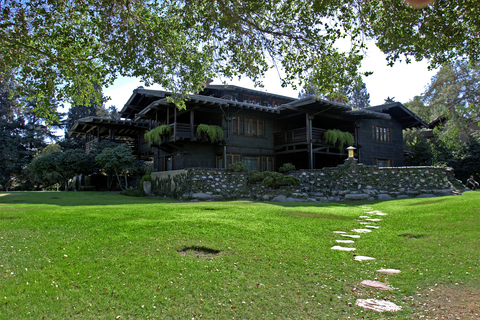What Goes with What?

 What type of swimming pool do you put in the backyard of a Craftsman-style home?
What type of swimming pool do you put in the backyard of a Craftsman-style home?
This question, presented during a course on 20th-century architecture I taught at the pool show in Las Vegas last November, is easy to ask but difficult to answer. In fact, this is an introduction to a whole series of articles that will appear in this newsletter over the next several months with the goal of triggering the thought processes involved in finding the right answers to such questions.
The problem posed by these questions is that most of the home styles that emerged in the time between 1870 and 1970 became popular without any thought being given to swimming pools, which were generally rare commodities before the 1960s. So adding a watershape to one of these settings is merely a conceptualization of the designer – an approximation of what might be called “appropriate.â€
The truth is, this has always been an issue for designers who come onto a site and find a home built 50 or more years ago. It confronts us every time we visit a Gothic- or Tudor- or Baroque- or Prairie- or Spanish Colonial-style home: Generally speaking, there are no precedents, no examples to reference other than the approximations offered by other modern designers.
And the challenge for watershapers is sharper than it is for other designers. We know all about appropriate plant types, masonry treatments and carpentry techniques, but there’s no book about watershapes for even the most recent or prevalent of architectural forms. This is not to say that Craftsman-style homes never had pools; rather, it’s an observation based on the fact that there aren’t enough of them to allow us to categorize them or describe particular watershape characteristics as being typically Craftsman.
As my course at the pool show moved along, most of the students decided that a rectangular pool would be most appropriate for a Craftsman-style home. I was in no position to contradict them, but we soon recognized that shape is only the start of the discussion, after which countless questions about materials, finishes, details and functionality all start flowing. (Note: We’ll get around to addressing those issues with respect to Craftsman-style homes in a while – after we’ve worked through a couple other examples first.)
In the rush of this 20-hour class, we spent almost all of our time learning how to formulate the questions and then look for the answers. What chiefly emerged was a developing awareness that, as watershapers, we have a responsibility to listen to what a particular architectural type is saying to us, and then respond in ways that respect its core values.
In other words, we owe it to a particular setting to acknowledge its architectural environment and to work up a design in collaboration with its essence. This calls on watershapers to develop a keen eye and a desire to understand the historical significance of any architectural style they might encounter.
As this series of articles unfolds, time and again we’ll be faced with this simple idea: Listen to a space and it will speak volumes!
Next: Working with a home in the style of the Spanish Colonial Revival.
Mark Holden is a landscape architect, pool contractor and teacher who owns and operates Holdenwater, a design/build/consulting firm based in Fullerton, Calif. He may be reached via e-mail at [email protected]









